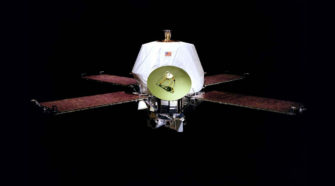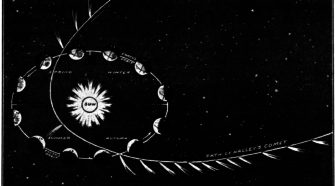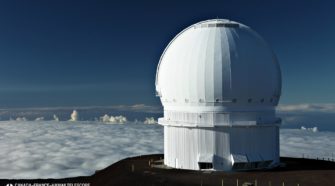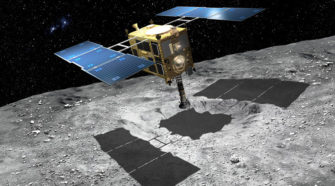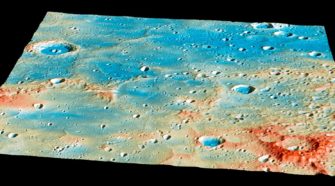History
This Week in History: May 31-June 6
MAY 31, 2020: Comet ATLAS C/2019 Y4 will pass through perihelion at a heliocentric distance of 0.25 AU. A previous “Comet of the Week,” Comet ATLAS initially showed potential for becoming a bright object, but it now appears to have all but disintegrated as it has approached perihelion. It is traveling in the same orbit …
This Week in History: May 24-30
MAY 24, 1981: American astronomer Harold Reitsema and his colleagues, observing from Arizona, detect a possible moon of Neptune during an apparent occultation of a background star. This object was confirmed by Voyager 2 during its flyby of Neptune in August 1989 and is now known as Larissa and designated as Neptune VII. MAY 24, …
This Week in History: May 17-23
MAY 17, 1882: Observers in the path of a total solar eclipse that crossed central Egypt see and photograph a bright comet during totality. Comet Tewfik X/1882 K1, which was never seen again, was an apparent Kreutz sungrazer, and is this week’s “Comet of the Week.” Solar eclipse comets, in general, are the subject of …
This Week in History: May 10-16
MAY 10, 1999: The LINEAR survey in New Mexico discovers the near-Earth asteroid now known as (162173) Ryugu. Ryugu was the destination of JAXA’s Hayabusa2 sample-return mission, which arrived there in mid-2018 and departed there late last year, and which is now en route back to Earth with its collected samples. The Hayabusa2 mission is …
This Week in History: May 3-9
MAY 3, 1998: Solar scientist Shane Stezelberger discovers a bright comet traversing the northern field of view of the LASCO C3 coronagraph aboard the SOlar and Heliospheric Observatory (SOHO) spacecraft. Comet SOHO C/1998 J1, which passed through perihelion five days later at a heliocentric distance of 0.153 AU and then became a naked-eye object visible …
This Week in History: April 26-May 2
APRIL 26, 1803: A collection of over 3000 meteorites falls and lands near the town of L’Aigle in Normandy, France. Up until then the existence of “stones falling from the sky” had been harshly debated, but the L’Aigle meteorite fall conclusively proved that such events happen, and in effect gave birth to the study of …


